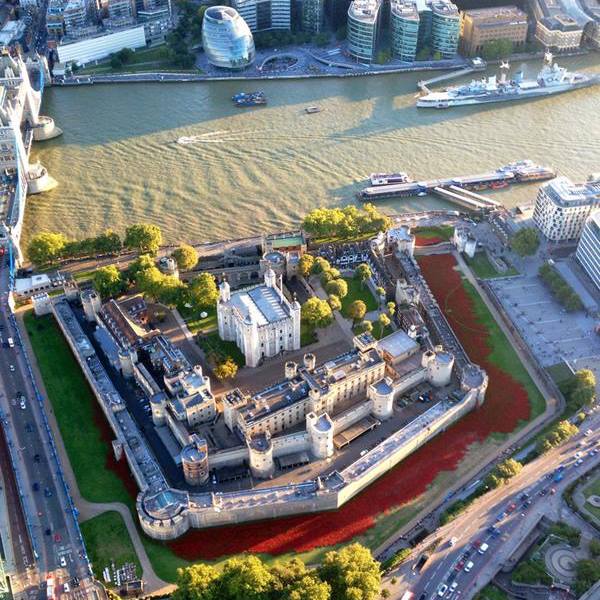Poppies at the Tower


The Duke and Duchess of Cambridge and Prince Harry each planted a poppy.
Each poppy is made by hand. See the video at the Tower’s web site: http://poppies.hrp.org.uk/about-the-installation.
Poppies, of course, became symbols of the war because of the poem by Lt. Col. John McCrae, the Canadian physician who served as both a gunner and a medical officer though much of the war. During the Second Battle of Ypres, his battalion faced one of the first chemical attacks, but still held. Like so many soldiers, he avoided death by bullets, bombs, and gas only to die of pneumonia early in the last year of the war.
In Flanders fields the poppies blow
Between the crosses, row on row,
That mark our place; and in the sky
The larks, still bravely singing, fly
Scarce heard amid the guns below.
We are the Dead. Short days ago
We lived, felt dawn, saw sunset glow,
Loved and were loved, and now we lie
In Flanders fields.
Take up our quarrel with the foe:
To you from failing hands we throw
The torch; be yours to hold it high.
If ye break faith with us who die
We shall not sleep, though poppies grow
In Flanders fields.
Some critics think the poem falls apart in the third stanza, where the pastoral and elegiac mode with which the poem opens is replaced by “recruiting poster language.” They have a point. But the poppies worn today—like those planted at the Tower—ask us only to remember and mourn, not to fight. We are free to think that if the fallen are angry, it is not at those who refused to “take up the quarrel,” but with those who started it.
